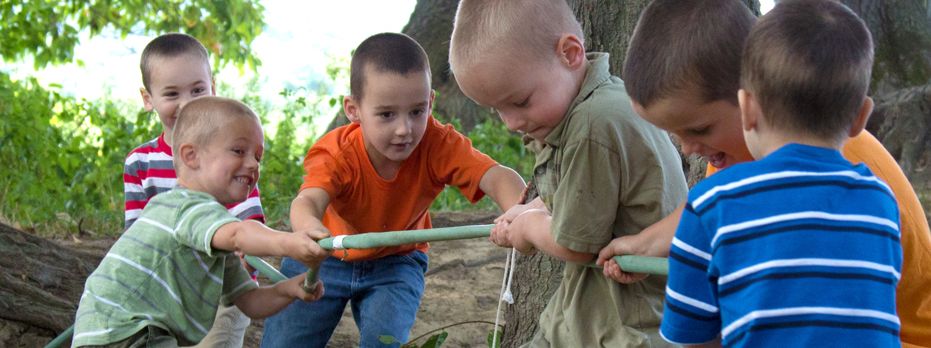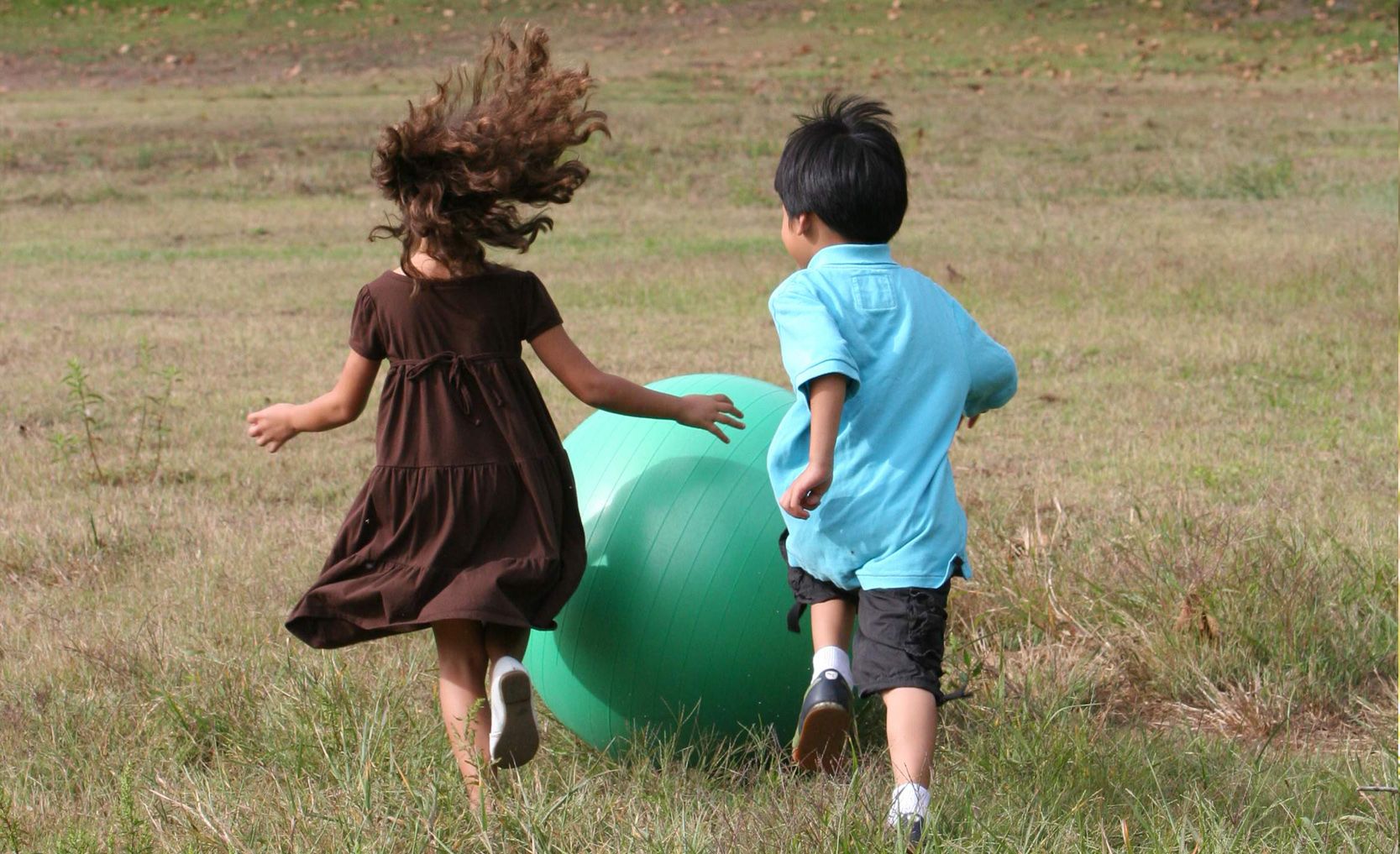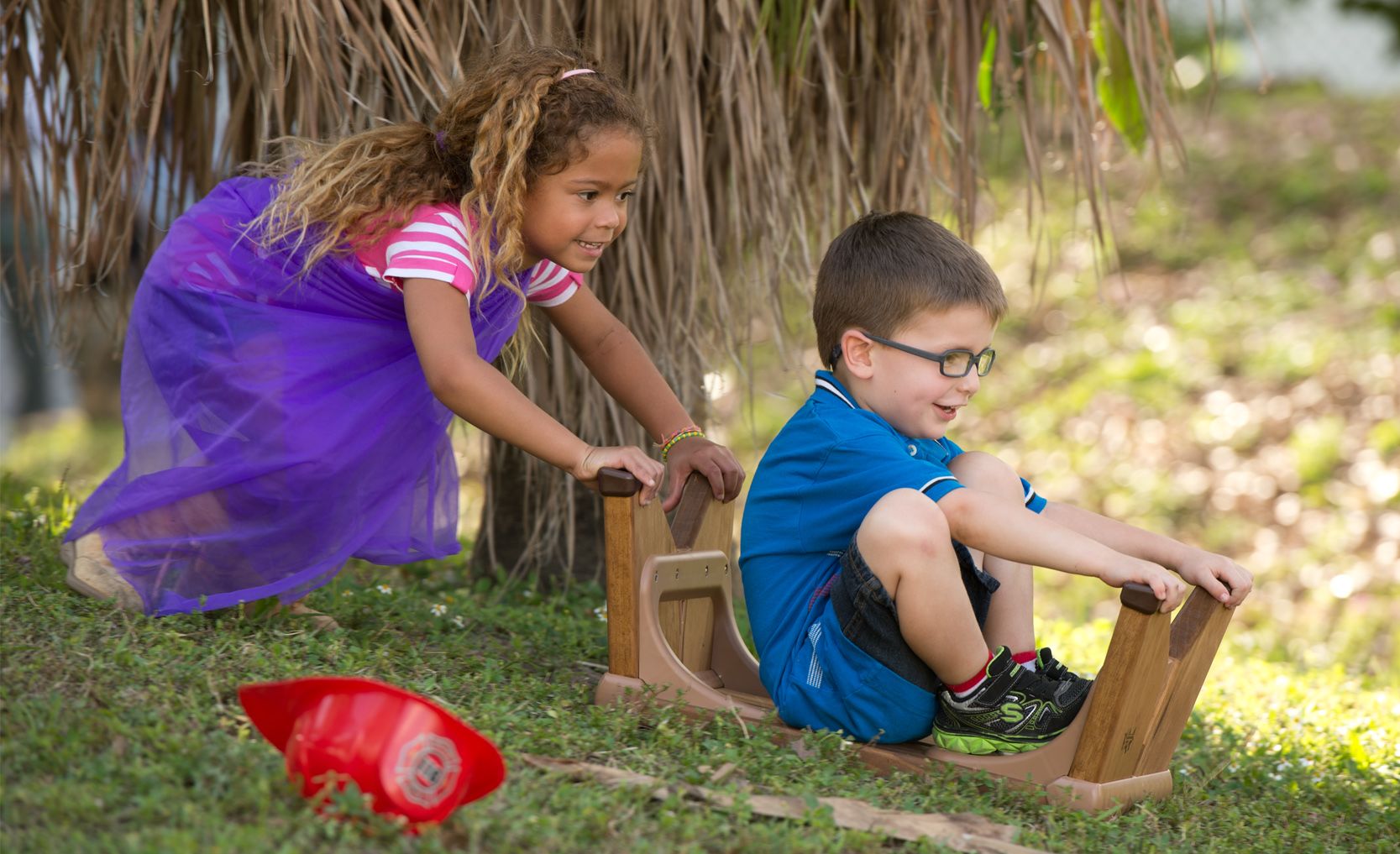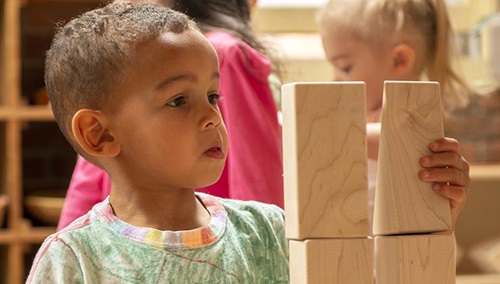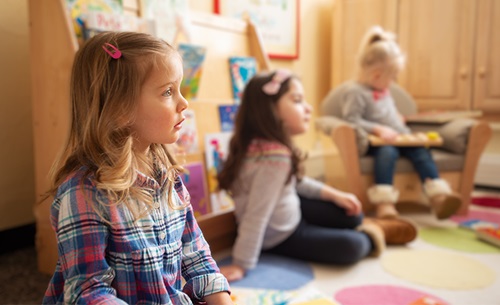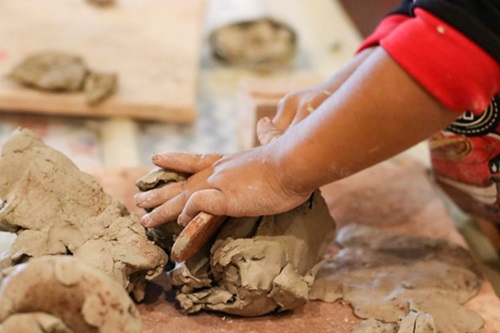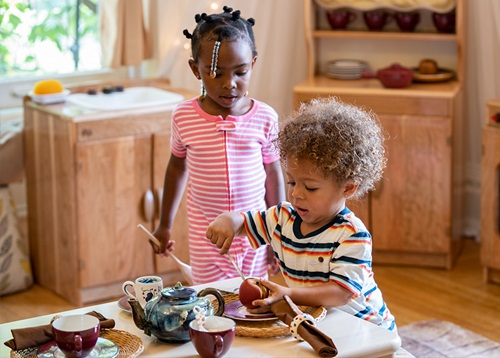Embracing Rough and Tumble Play
| September 2016Embracing rough and tumble play? Isn’t that the type of play I try to stop from happening in my classroom?
For years I gently reminded rambunctious children: “we don’t play that way inside.” I often talked about teaching to the whole child but, looking back, I was ignoring many of the children’s needs for physical development. By repeatedly telling them to "wait until we were outside" I was failing to recognize a vital part of who these children were.
Rough and tumble play—play that involves the whole body—whether it is running, spinning, falling, or roughhousing, is the purest form of what it means to be a child. It is the two-year-old jumping up and down, waving their arms up and down yelling, “Mommy! Mommy!” at the end of a day at school. It is the four-year-old spinning and falling, and then getting up and spinning again. It is the time when children are so engrossed in the joys of movement that they lose all track of time. As we grow into adulthood, we see this same total immersion of the mind and body when a dancer executes a phrase with extreme focus and precision, or when a surgeon completes a complex procedure and saves a life. Sometimes this immersion in movement is as simple as tending a garden or rocking a child to sleep.
I embrace children’s boundless energy and their need to move almost constantly. Movement is the basis for all exploration and expression. By physically challenging themselves, children explore who they are and the world around them. Maybe they will try climbing a little higher or running a little faster, they may roll on the grass, hit a stick against a tree to see if it breaks, or see how close they can get to a bird before it flies away. Young children express themselves through movement. Children may chase each other or roughhouse to show they are friends. They may stomp their feet and roar to prove they are powerful. We can choose to celebrate this expression or choose to restrict it, but either way, children will continue to move.
Rough and tumble play, especially roughhousing, is often misunderstood. People think of a classroom in complete chaos with children knocking each other over, but this is not the case. It is important to remember that it is play, not fighting; play is fun for all those involved. The term rough-and-tumble play includes most play using the full body including body contact with another individual, body contact with objects, striking objects with feet, hands, or an object such as a racket or bat. This definition includes running, climbing, and other full body activities. In other words, much of the play labeled rough-and-tumble is neither rough nor does it involve tumbling.
While there is recognition that children like to run, climb, and play vigorously, it is often shrugged off as simply a way for children to “get their wiggles out,” rather than a function of being a child. Children let us know when they need to move every time we tell them to sit down or to wait until outside time. We need to start seeing and hearing what the children are telling us.
Many of us have been teaching with the mistaken notion that children are listening—and thus learning—when they are sitting still and looking at us. In reality, children may be learning more when they are engaged with materials or moving their bodies. If children are interested in the activity they are doing, it presents an opportunity for rich conversation with teachers or other children. For many children, pretending involves vigorous movement, perhaps even chasing or running. Too often I hear teachers say that these boisterous children never settle into play, but rather spread chaos throughout the room. We need to find a way to stop interrupting this activity, even allowing for this play inside, and we may see even the most active children involved in rich, complex pretend play.
There are many ways to incorporate movement into the teacher-led portions of a preschool or kindergarten day. Children develop literacy skills by acting out a story, as well as by having a book read to them. They can learn number concepts playing a game throwing or kicking balls into a goal, just as easily as sitting at a table with small counters. Running provides plenty of opportunities for learning the basics of potential and kinetic energy (think of running uphill vs. downhill) or momentum.
Allowing rough and tumble play does not mean that bigger children run roughshod over smaller children. In my classroom we follow the basic guideline: “We Take Care of Each Other”, rather than using a long list of rules. If Sandra and Kenneth knock over Latifa’s block building while they are playing, they are not taking care of Latifa. If Sandra and Kenneth move to the mat where no one is building, they are taking care of each other. If Kenneth says, “Stop,” Sandra needs to stop. If Kenneth decides to resume the roughhousing, he will let Sandra know. It’s not a question of whether the play itself is right or wrong, but rather a question of whether children are respecting each other.
And ultimately, it is a question of whether we as teachers will respect children and the ways they express themselves. We must ask if we are ready to embrace children for who they are, or if we want to hold onto our vision of children sitting quietly while we impart our knowledge. When I embraced rough and tumble play, my interactions with children became richer and more meaningful.
Article based on the author's forthcoming book: Embracing Rough and Tumble Play: Teaching with the Body in Mind.

